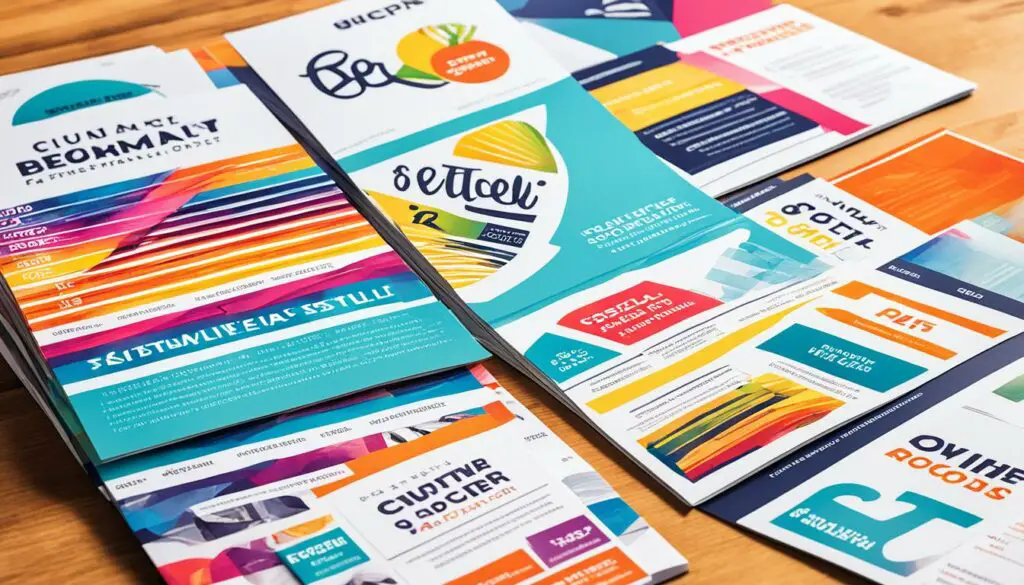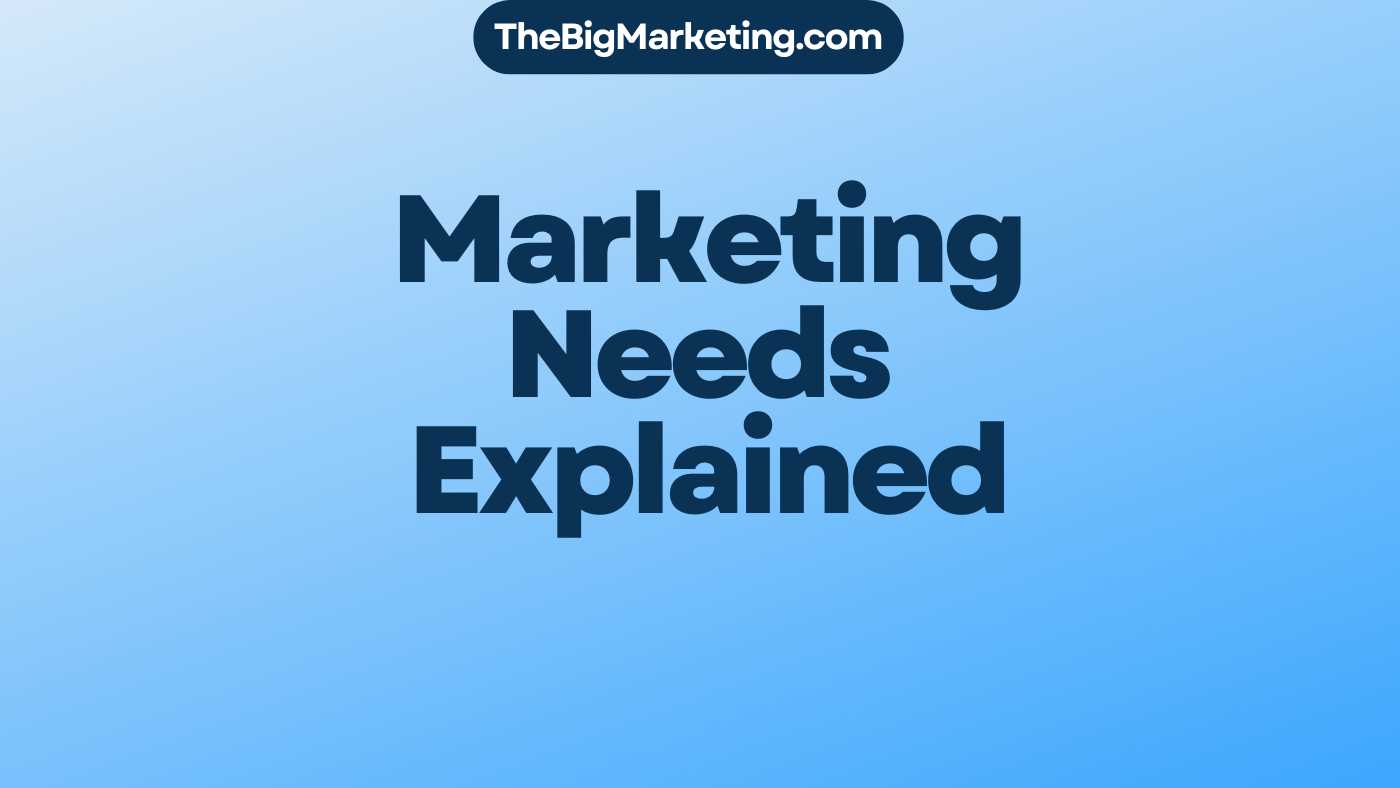In today’s fast-paced marketing landscape, brand managers are constantly challenged to create effective campaigns that drive results. A key aspect of this process is understanding the difference between marketing assets and collateral, and how to use them effectively.
Marketing assets refer to the creative materials that are used to promote a brand, product, or service. These can include various types of content such as images, videos, presentations, and more. The main goal of marketing assets is to capture the attention of the target audience and generate interest in the offering.
On the other hand, marketing collateral refers to the materials that support the sales and conversion processes. This includes both printed materials like brochures and flyers, as well as digital assets like landing pages and email templates. Marketing collateral plays a crucial role in educating and informing customers, as well as establishing brand identity.
To create effective marketing assets, it’s important to understand the different types available. These can include product images, infographics, social media content, and more. By utilizing a mix of assets, brands can effectively communicate their message and enhance their marketing campaigns.
Proper utilization of marketing collateral is equally important. Examples of marketing collateral materials include printed brochures, digital presentations, case studies, and testimonials. These materials provide in-depth information, showcase the brand’s offerings, and build trust with the audience.
To ensure successful campaigns, it’s crucial to organize and manage marketing collateral effectively. This involves categorizing and naming files, providing access to organized repositories, and maintaining control over modifications. Brand management teams can also streamline the process by using dedicated software that streamlines asset creation and distribution.
In conclusion, understanding the difference between marketing assets and collateral, creating effective assets, and utilizing marketing collateral effectively are key elements in driving successful marketing campaigns. By implementing these strategies, brands can capture the attention of their target audience, build brand identity, and achieve their marketing goals.
Key Takeaways:
- Marketing assets and collateral serve different purposes in marketing campaigns.
- Marketing assets include various types of creative materials used to promote a brand, product, or service.
- Marketing collateral supports the sales and conversion processes and includes printed and digital materials.
- Creating effective marketing assets involves utilizing different types of content such as images, videos, and presentations.
- Utilizing marketing collateral effectively includes using materials like brochures, presentations, case studies, and testimonials.
What is Marketing Collateral?
Marketing collateral refers to branded assets that promote a company, product, or service. It includes a wide range of materials, both print and digital, that establish a relationship between the brand and the audience. Examples of marketing collateral include flyers, brochures, landing pages, explainer videos, testimonials, ebooks, whitepapers, case studies, and more. These assets are used to educate and inform customers, support sales efforts, and establish the brand identity. Properly utilizing marketing collateral is essential for successful marketing campaigns.
There are various types of marketing collateral that businesses can utilize to communicate with their target audience effectively. These materials play a crucial role in building brand recognition, establishing credibility, and driving customer engagement. By leveraging different types of marketing collateral, businesses can capture the attention of their target market and compel them to take action.
Here are some common types of marketing collateral:
- Flyers: Eye-catching print materials that provide concise information about a product, event, or promotion.
- Brochures: Informative booklets that showcase the features, benefits, and specifications of a product or service.
- Landing Pages: Web pages designed with a specific goal in mind, such as lead generation or product promotion.
- Explainer Videos: Short videos that explain a product, service, or concept in an engaging and visually appealing way.
- Testimonials: Statements from satisfied customers that highlight the positive experiences they’ve had with a brand or product.
- Ebooks: In-depth digital publications that provide valuable information or insights to educate the target audience.
- Whitepapers: Detailed reports or studies that delve into a specific industry topic or problem, offering authoritative insights.
- Case Studies: Real-life examples that outline how a product or service has helped a customer achieve success.
Each type of marketing collateral serves a specific purpose and can help businesses achieve different marketing objectives. By strategically selecting and utilizing the right mix of marketing collateral, businesses can effectively engage their target audience, generate leads, and ultimately drive conversions.
Importance of Marketing Collateral Organization
Proper organization of marketing collateral plays a vital role in the success of any marketing campaign. It starts with the design process, where brand management teams should focus on categorizing and naming files to create an organized repository for assets. By implementing a systematic approach to organizing marketing assets, teams can easily locate and utilize the collateral they need, saving time and effort.
When sharing marketing collateral with local marketers, it is crucial to provide them with access to organized files and tools for editing. This ensures that they can easily find the necessary assets and make necessary modifications while maintaining brand integrity. By categorizing and labeling the collateral, local marketers can locate the specific materials they need for their campaigns, resulting in more targeted and effective marketing efforts.
Moreover, providing tools and training to local marketers is essential for ensuring that they can properly handle and edit marketing assets. This includes offering software and platforms designed to streamline the editing and customization process. By equipping local marketers with the necessary tools and training, brands can empower them to make informed decisions and create cohesive and impactful marketing materials.
Efficiently organizing marketing collateral not only improves internal efficiency but also helps maintain brand consistency and integrity across various campaigns and channels. It establishes a standardized approach to asset management, ensuring that all team members understand and follow the established guidelines. This, in turn, enhances brand credibility and recognition in the marketplace.
Benefits of Marketing Collateral Organization
Organizing marketing collateral provides several tangible benefits that contribute to the success of marketing campaigns:
- Efficiency: A well-organized repository of marketing assets allows teams to quickly locate and utilize the collateral they need, saving time and effort.
- Consistency: Categorizing and naming files ensures that the right assets are used in the right context, maintaining brand consistency across different campaigns and channels.
- Control: Proper organization helps in retaining control over modifications of marketing assets, facilitating brand governance and maintaining brand integrity.
- Accessibility: Providing local marketers with access to organized files and editing tools enables them to easily find and customize marketing collateral for their local campaigns.
- Training: Offering tools and training to local marketers empowers them to make informed decisions when editing marketing assets, resulting in better quality collateral.
Overall, by prioritizing the organization of marketing collateral and implementing effective tools and training, brands can optimize their marketing efforts and achieve more impactful and consistent results.
Managing Distributed Marketing Collateral Without Dedicated Software
While dedicated software can greatly streamline the management of marketing collateral, some organizations opt for alternative methods to manage their distributed marketing collateral without the use of software. These methods often involve combining different tools and processes, which can be complex and time-consuming.
However, regardless of the approach taken, it is essential that the process or tool used for managing marketing collateral effectively covers five basic functionalities:
- Planning: A clear plan for organizing and categorizing the marketing collateral is crucial to ensure easy accessibility by all stakeholders.
- Editing and customization: The ability to make necessary edits and customize the collateral to suit specific needs is essential for maintaining brand consistency and relevance.
- Proofing: Implementing a proofing process allows for thorough review and quality control, minimizing the risk of errors or inaccuracies in the collateral.
- Approval: Establishing an approval workflow ensures that all marketing collateral undergoes proper review and authorization before being distributed or deployed.
- Fulfillment: The final step in managing marketing collateral involves the actual distribution or deployment of the materials to the intended channels or recipients.
Without a comprehensive system in place, there is a greater risk of incorrect or unprofessional marketing materials being used in the field, which can negatively impact brand perception and campaign effectiveness.
Alternative Methods for Managing Distributed Marketing Collateral
Although managing distributed marketing collateral without dedicated software can be challenging, there are alternative methods that organizations can explore:
- Utilizing cloud storage solutions, such as Google Drive, Dropbox, or OneDrive, to create organized repositories for marketing collateral files.
- Employing project management tools, like Trello or Asana, to track and manage the different stages of collateral creation, editing, and approval.
- Establishing clear communication channels and processes between brand managers and local marketers to ensure seamless collaboration and timely distribution of collateral.
While these alternative methods may not provide the same level of automation and efficiency as dedicated software, they can still help organizations effectively manage their distributed marketing collateral without the need for complex and costly solutions.
| Pros | Cons |
|---|---|
|
|
Overall, while managing distributed marketing collateral without dedicated software can be challenging, organizations can still leverage alternative methods to effectively organize, customize, and distribute their collateral. However, it is important to carefully evaluate the limitations and trade-offs associated with these methods to ensure they align with the organization’s goals and resources.
Using Software to Manage Marketing Collateral
Local marketing automation (LMA) software is a game-changer when it comes to streamlining asset creation and distribution. With LMA tools, brand managers can implement efficient workflows and templates for local outlets, ensuring more effective and compliant local marketing. One such software is CampaignDrive by Pica9, offering a comprehensive solution for managing marketing collateral.
CampaignDrive provides a range of features to simplify the management of a large volume of collateral across global brand management teams. Here are some key capabilities of marketing collateral software:
- Streamlining asset creation: Marketing collateral software like CampaignDrive allows for a seamless and efficient process of asset creation. With built-in templates and digital asset management systems, brand managers and local marketers can easily create, customize, and distribute marketing materials.
- Implementing local marketing workflows: Local marketing automation tools enable brand managers to implement standardized workflows for local outlets. This ensures consistent branding and messaging across various locations, resulting in more effective and targeted marketing campaigns.
Benefits of Using Marketing Collateral Software
Implementing marketing collateral software offers numerous benefits for businesses striving to streamline their marketing efforts:
- Efficiency and productivity: By automating the asset creation and distribution process, marketing collateral software significantly reduces the time and effort required to manage marketing materials. This allows brand managers to focus on strategic initiatives and drive better results.
- Consistency and brand compliance: With predefined templates and workflows, marketing collateral software ensures consistent branding and messaging across all marketing materials. This helps maintain brand integrity and compliance, even in decentralized marketing environments.
- Improved collaboration: Marketing collateral software provides a centralized platform where brand managers and local marketers can collaborate, share feedback, and make real-time updates to marketing assets. This streamlines communication and fosters effective collaboration.
- Data-driven insights: By leveraging marketing collateral software, businesses gain access to valuable data and analytics. These insights help measure the effectiveness of marketing campaigns, identify areas for improvement, and make data-driven decisions.
Implementing marketing collateral software enables businesses to optimize their marketing operations, effectively manage their assets, and drive successful marketing campaigns in a streamlined and controlled manner.
Must-Have Marketing Collateral
Effective marketing collateral is essential for creating a strong and recognizable brand identity. It includes a variety of materials that help promote your company, connect with your target audience, and drive business growth. In this section, we will explore the must-have marketing collateral that every business should consider.
Logo
A logo is the visual representation of your brand. It serves as a symbol of your identity and helps customers recognize and remember your business. Ensure that your logo appears consistently across all marketing collateral to build brand recognition.
Mission Statement
Your mission statement defines the purpose and values of your company. It communicates the impact of your work and the value you provide to your audience. Incorporate your mission statement into your marketing collateral to convey your brand’s identity and connect with your target market.
Website
A well-designed and user-friendly website is crucial for establishing an online presence. Optimize your website with relevant keywords and incorporate lead generation strategies to attract and convert potential customers.
Social Profiles
Having an active presence on popular social platforms allows you to reach and engage with your target audience on a more personal level. Share relevant content, interact with followers, and showcase your brand’s personality to build a loyal community.
Listings
Listing your business on search engines and local platforms helps potential customers find accurate information about your products or services. Ensure that your listings are up-to-date and provide all the necessary details to encourage customers to choose your business.
Email Signature
An email signature adds a professional touch to your communications. Include your logo, contact information, and a brief call-to-action to leave a lasting impression on recipients.
Business Cards
Business cards are tangible marketing collateral that you can distribute during networking events or client meetings. They provide a quick and convenient way for potential clients to contact you and learn more about your business.
One-Pager
A one-pager is a concise document that outlines your products or services, including essential information such as features, benefits, and pricing. It serves as a handy reference for potential customers and can be used during sales presentations or as leave-behind material.
Brand Colors
Consistent and recognizable brand colors help establish a strong brand identity. Incorporate your brand colors across all marketing collateral to create visual cohesion and reinforce brand recognition.
By leveraging these must-have marketing collateral elements, you can effectively promote your brand, engage your target audience, and drive business success.
Good-to-Have Marketing Collateral
When it comes to effective marketing campaigns, it’s not just about the must-have marketing collateral; there are various additional assets that can elevate your brand presence and engagement with your audience. Good-to-have marketing collateral includes:
- Templated emails: Create engaging and branded email interactions with your audience that are consistent and easy to personalize.
- Blog posts: A fundamental component of content marketing, blog posts help target keywords, develop brand personality, and provide valuable information to your audience.
- Ebooks or guides: Educate your audience and establish your authority in your industry by offering comprehensive resources that address their pain points and provide solutions.
- Online ads: Target specific audiences and reach new potential customers through well-designed and strategically placed online advertisements.
- Landing pages: Create specific pages tailored to your offers or campaigns to maximize the conversion potential and guide visitors towards desired actions.
- Testimonials and case studies: Social proof is a powerful marketing tool that helps build trust and credibility. Showcase satisfied customers through testimonials and present success stories through well-documented case studies.
- Pitch deck: Ensure consistency and alignment in your sales presentations by utilizing a well-crafted pitch deck that effectively communicates your value proposition and key selling points.
- Flyers: Ideal for local marketing and events, flyers are tangible collateral that can grab attention and generate interest in your brand or offerings.
These good-to-have marketing collateral pieces can enhance your overall marketing strategy and provide additional touchpoints to engage and convert your target audience.
| Good-to-Have Marketing Collateral | Benefits |
|---|---|
| Templated emails | Create engaging and consistent email interactions with the audience. |
| Blog posts | Target keywords and develop brand personality through informative content. |
| Ebooks or guides | Educate the audience and generate leads through comprehensive resources. |
| Online ads | Target specific audiences and find new potential customers. |
| Landing pages | Maximize conversion potential with dedicated pages for offers or campaigns. |
| Testimonials and case studies | Provide social proof and help convert new customers. |
| Pitch deck | Ensure consistency and alignment in sales presentations. |
| Flyers | Effective for local marketing and events. |
Examples of Marketing Collateral
Marketing collateral comes in many forms, each serving a specific purpose in promoting a company and its offerings. Here are some examples of marketing collateral:
| Marketing Collateral | Description |
|---|---|
| Sell Sheets | Provide in-depth information about a product or service to potential customers. |
| Brochures | Widely distributed marketing materials that showcase a company’s offerings and highlight key features. |
| Landing Pages | Specific web pages designed to focus on particular goals or outcomes and help with conversion. |
| Explainer Videos | Succinctly convey complex messages about a product or service, showcasing its benefits in an engaging format. |
| Testimonials | Statements from satisfied customers that provide social proof and credibility for a brand or product. |
| Ebooks, Whitepapers, and Case Studies | Long-form content pieces that educate the audience about specific topics related to a company’s expertise, generating leads and establishing authority. |
| Flyers | Traditional printed marketing materials used for local marketing and event promotion. |
| Infographics | Visual representations of data or information that simplify complex concepts and make them more shareable. |
| Presentations | Slide decks used to deliver compelling and persuasive messages during meetings, conferences, or webinars. |
| Emails | Used for direct communication with customers to provide updates, promotions, or personalized messages. |
These examples illustrate the diverse range of marketing collateral that can be used to drive engagement, increase brand awareness, and ultimately lead to a successful marketing campaign.

Conclusion
Marketing assets and collateral both play crucial roles in the success of marketing campaigns. Proper organization and management of marketing collateral are essential for effective campaigns, especially for distributed brands. Using software, such as local marketing automation tools, can streamline the creation and distribution of marketing assets.
Must-have marketing collateral includes a logo, website, social profiles, and business cards. These elements are fundamental for establishing brand identity and credibility. On the other hand, good-to-have collateral encompasses a larger range of materials, such as templated emails, blog posts, ebooks or guides, online ads, landing pages, testimonials and case studies, pitch decks, and flyers. These collateral pieces serve to engage and educate the audience, generate leads, and support sales efforts.
Understanding the different types of marketing collateral and their purposes is vital for businesses to create impactful and strategic marketing campaigns. By leveraging the right assets, companies can effectively convey their brand message, engage their target audience, and drive desired outcomes. Properly organizing and managing marketing collateral, with the help of software tools, can facilitate seamless creation, distribution, and utilization of assets, ultimately leading to successful marketing campaigns.
FAQ
What is the difference between marketing assets and collateral?
Marketing assets refer to all resources used in marketing campaigns, including digital and print materials, while marketing collateral specifically refers to the materials that support sales and conversion processes.
What are some types of marketing assets?
Examples of marketing assets include layouts, imagery, videos, social media posts, website content, blog articles, and email templates.
Can you provide some examples of marketing collateral?
Examples of marketing collateral include brochures, flyers, landing pages, explainer videos, testimonials, ebooks, whitepapers, case studies, and presentations.
Why is marketing collateral important?
Marketing collateral is crucial because it educates and informs customers, supports sales efforts, establishes brand identity, and helps build trust and credibility with the audience.
How should marketing collateral be organized?
Proper organization of marketing collateral starts with categorizing and naming files and creating an organized repository for assets. It’s also important to provide access and tools for editing to local marketers while retaining control over modifications to maintain brand integrity.
How can distributed marketing collateral be managed without dedicated software?
Some organizations try to manage distributed marketing collateral by combining different tools and processes, but this can be complex and time-consuming. Without a comprehensive system, there is a risk of using incorrect or unprofessional marketing materials.
How can software help in managing marketing collateral?
Using software, such as local marketing automation tools, can streamline asset creation and distribution. It helps with planning, editing and customization, proofing, approval, and fulfillment, ensuring effective and compliant local marketing.
What are some must-have marketing collateral materials?
Must-have marketing collateral includes a logo, mission statement, website, social profiles, listings, email signature, business cards, one-pager, and brand colors.
What are some good-to-have marketing collateral materials?
Good-to-have marketing collateral includes templated emails, blog posts, ebooks or guides, online ads, landing pages, testimonials and case studies, pitch decks, and flyers.
Can you provide some examples of marketing collateral materials?
Examples of marketing collateral materials include sell sheets, brochures, landing pages, explainer videos, testimonials, ebooks, whitepapers, case studies, flyers, infographics, presentations, and emails.



